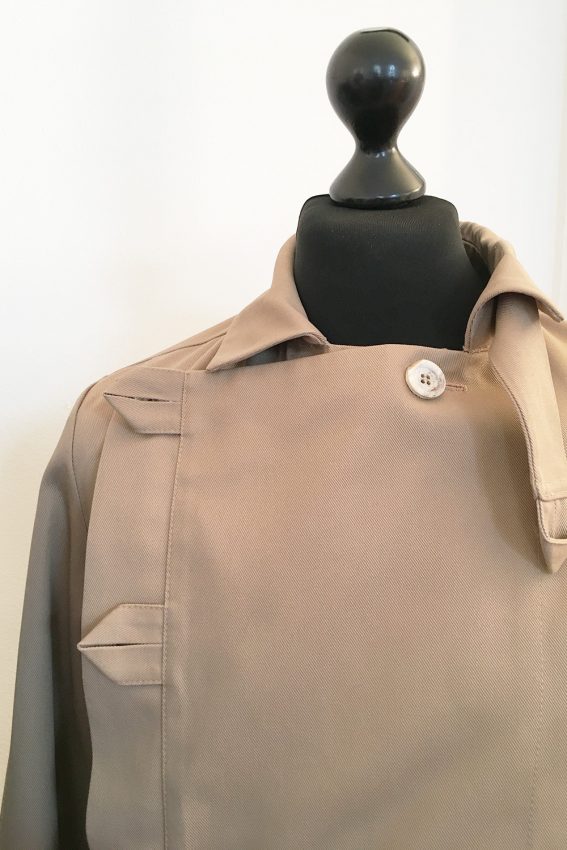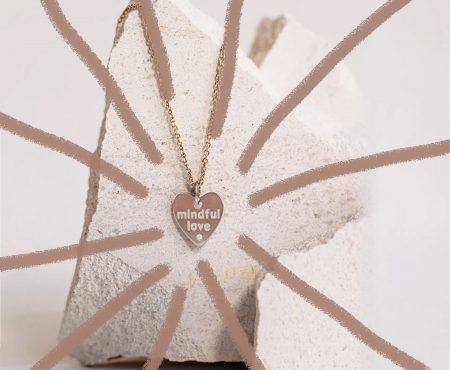If Take Care, the recently launched pilot project by H&M, forward-looking collaborations of the AMD or sustainable capsule collections – right now, almost every day, I hear about exciting projects that put the issue of sustainability at the center of attention. Which five current projects should not be missing at my Sustainable News?
Design Competition: AMD Dusseldorf x Oeko-Tex
When fashion students are made aware of sustainable production methods, substances, etc., I am always extremely enthusiastic. Because here can still decide career paths. And every sustainability fan in the textile industry can make a big difference. Currently, the seal Oeko-Tex cooperates with the second semester of the study program “Fashion Design” at the AMD Academy Fashion & Design in Düsseldorf. Twenty-four design students will be able to use Oeko-Tex certified fabrics and ingredients as part of their degree program “Formfindung Kleid”.
Pollutant-tested and ecologically harmless production is becoming more and more important to the consumer. This awareness will be given to the designers and fashion journalists of tomorrow. – Georg Dieners, Oeko-Tex
The jury will decide on the outcome of the competition in two steps. Also present: representatives of Oeko-Tex (Secretary General Georg Dieners), the AMD (Dean of Studies Prof. Claudia Ebert-Hesse), the press (Gudrun Allstädt of the Textilwirtschaft) and the trade (Uta Feldmann, Senior Design Manager C&A Europe). First drafts will be presented to the jury in May 2018 before the final decision will be communicated in January 2019. The first three places will receive prize money. Ten more designs will be shown as part of EXIT, the AMD Graduate Fashion Show during the Platform Fashion in January 2019. The project will be accompanied by students of the field of ” Modejournalismus/ Modekommunikation “, who will take care of the media coverage.

Cooperation: Stop the Water while using me x Closed
The finiteness of our resources and above all their appreciation is the driven force for the Hamburg-based beauty label Stop the Water while using me. Even though 75 percent of the earth is water, only 0.3 percent are suitable for drinking. And because it does little to save water and pollute it at the same time, the Hamburg-based produces their products without parabens, silicones and synthetic ingredients. Instead, they rely on the power of nature with ingredients from predominantly organic farming. Good to know: Part of the proceeds goes to the “Good Water Projects” initiative. It supplies people in arid areas with clean drinking water.
Double from Hamburg with a common mission: Protecting resources
The subject of resources is also the subject of the cooperation of the Denimlabel Closed with the Hamburg-based natural cosmetics brand. For the t-shirts, jeans, hoodies and beanies of the limited, 8-piece Capsule Collection “The Limited” only ecologically produced materials were used. So the hoodies and T-shirts are made of organic cotton, the jeans were dyed with a new, water-saving and biological dyeing technique. In addition, they are treated in a resource-saving manner with innovative techniques such as laser, ozone treatments, bio-enzyme washes or ice blasting. The process will start in winter 2018 under the title “A better blue” standard at Closed. Available (including two limited soaps) from May 2018 on closed.com and stop-the-water.com

Consistently sustainable: Armedangels
For more than ten years, Armedangels has been designing eco-fair fashion that leaves as little impact as possible on man and nature. The Cologne-based have never rested on their pioneer existence, but constantly pursued their ambitious goals. For example, launched under the motto “Nothing to Hide” in 2017 an Organic Wool Collection (more about that in my article about fair wool on VOGUE.de). Now, with their innovative shipping boxes made of grass paper, they have taken another consistent step towards maximum sustainability.
Under the motto “What is greener than grass?” Armedangels now puts on grasspaper #armedangelsgrassbox
The smart packaging material is being developed by Creapaper, who was awarded the 2017 Climate and Environment Innovation Award for using the fast-growing raw material grass for paper production. Good to know: unlike traditional paper production, no chemicals are needed to make of grass paper. Even the required amount of water can be reduced to just two liters for the grass variant with this maximally sustainable variant of an average of 6000 liters per tonne when produced from wood. Overall, only one-tenth of the energy is needed. And: grass boxes smell wonderful of meadow, flower and herbs. Thumbs up for this!

Cradle-to-Cradle-Design: Manufactum x AMD
And another news from the Academy of Fashion & Design. Already in March 2018 a circulation-capable and fully sustainable collection was presented. Master students of the program “Sustainability in Fashion” at the AMD Berlin have designed this since the summer semester 2016 together with Manufactum. The task? Active Wear to develop under the latest sustainable aspects. Two master students were given the opportunity to present their designs during the Berlin Travel Festival in March 2018.
The sustainability concept du jour: Cradle-to-Cradle
The Finn Ida Urmas has developed the women’s vest “Wanderlust” with attached pockets including a removable shoulder bag. It works just as well for classic city life as it does for longer hiking tours. The second design is by Riccardo Garray. His men’s jacket “Modern Gentleman” can be closed in the middle or on each side. Plus: It has smart details that make the jacket weatherproof. Both designs were designed according to the cradle-to-cradle principle. In other words, the textiles are biodegradable and, at the end of the so-called primary use of Manufactum, are made secondary use and made compostable. Men’s jacket, around 400 euros – more information here and the women’s vest for 400 euros see here.

Take Care project H&M + Sustainability Report
On April 12, 2018, the H&M Group published its Sustainability Report 2017 in Hamburg. The goal: to create a circular design by maximizing materials and minimizing waste. Of course, H&M is not an eco label. The Swedes have not written that on the flags. Nevertheless, the company is working to make some processes more sustainable. In the meantime, H&M uses almost 60 percent organic or recycled cotton, 36 percent recycled materials in total, and in 2017 collected nearly 20 tons of textiles for recycling. Quite apart from that, H&M’s Conscious Exclusive Collection, the Foundation, and the annual Award promote sustainable innovation necessary for a change in the fashion industry. All details about the report can be found here
“Take care” is the name of the new H&M project and relies on repair instead of dump.
Especially exciting: Last week the Swedes started the pilot project “Take Care” in their store in Spitalerstraße in Hamburg. There are beauty products, repair-studios and online tips. In workshops, customers learn to repair their clothes and have them repaired on site. In addition, H&M has launched its first detergent line, now offering wipes for sneakers and patch sets and a laundry bag that prevents microplastic from getting into the sewage during washing. I’m curious to see how the Take Care project will be adopted, but in any case, I’m assuming that the textile giant is reaching consumers that we, as a green blogger, would not necessarily have to repair their clothes, and each repaired piece does not end up in the garbage. The new care products are available here

Published: April 18, 2018, 9 o’clock





